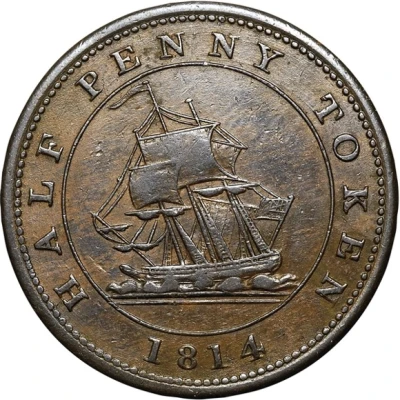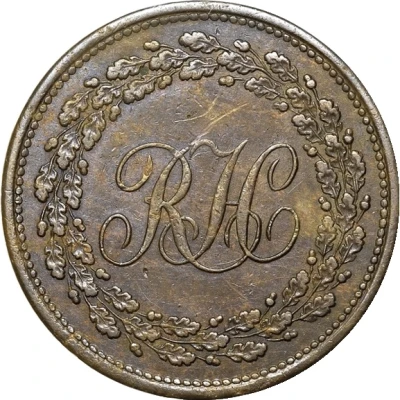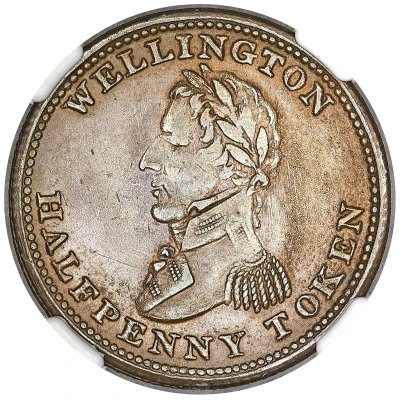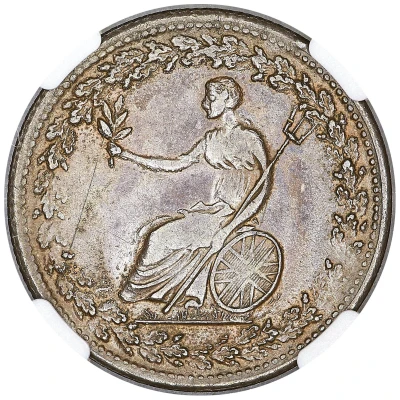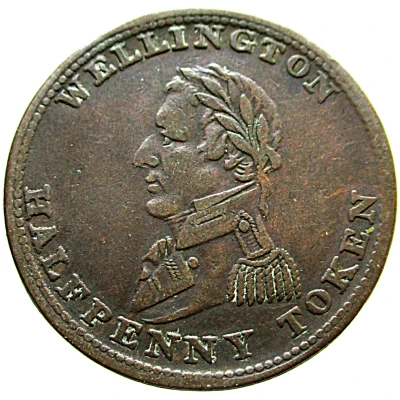
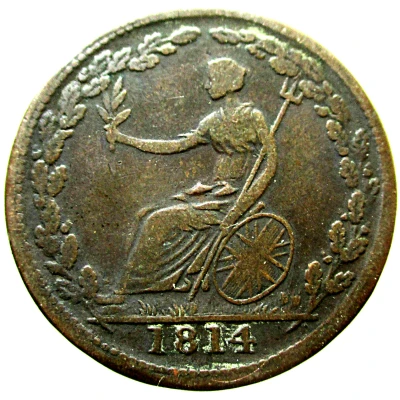

© el lobo
½ Penny Token Wellington Token
1814 year| Copper | 6.2 g | 27.3 mm |
| Issuer | Lower Canada (Canadian provinces) |
|---|---|
| Type | Token |
| Year | 1814 |
| Value | ½ Penny (1⁄480) |
| Currency | Pound |
| Composition | Copper |
| Weight | 6.2 g |
| Diameter | 27.3 mm |
| Shape | Round |
| Technique | Milled |
| Orientation | Coin alignment ↑↓ |
| Demonetized | Yes |
| Updated | 2024-10-04 |
| Numista | N#28392 |
|---|---|
| Rarity index | 58% |
Reverse
Sitting Britannia facing left, date below.
Script: Latin
Lettering: 1814
Edge
Engrailed
Comment
Weight: 5.9 - 6.5gDiameter: 27.1 - 27.5mm
WE-8A1 Square epaulette, Nine leaves, Ship sails in left background, Cannonballs, Middle tine barbed
WE-8A2 Square epaulette, Nine leaves, no ship, no cannonballs, Middle tine longest
WE-8A3 Square epaulette, Eight leaves, Ship sails in left background, Large trident with two tines barbed
WE-8A4 Round epaulette, Eight leaves, Ship sails in left background, Upper tine longer, no barbs
WE-8A5 Mule - Obverse A4 / Reverse A2
WE-8A1 Round epaulette, Seven leaves, Middle tine shorter
All lightweight pieces are antedated.
Interesting fact
The Wellington Token, also known as the ½ Penny Token, was issued in 1814 in Lower Canada, which is now known as Quebec and Ontario, Canada. It was made of copper and weighed 6.2 grams. One interesting fact about this coin is that it was issued during a time of currency shortages in the region, and it was used as a substitute for the official British currency. The token was issued by a group of merchants and traders who wanted to stimulate trade and commerce in the area. Despite its unofficial status, the Wellington Token was widely accepted and used in many transactions, and it remains a valuable collector's item to this day.
